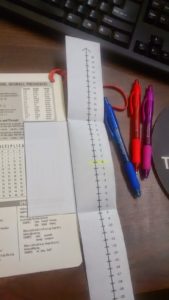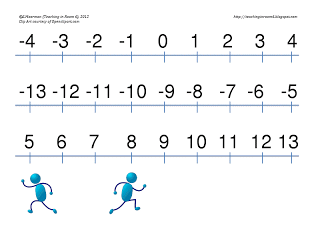This is part of my Best of the Web series, where I scour the Internet for the best free activities available today!
Adding and subtracting integers can break the hearts of middle and high school students
“See?? I just don’t get it. I’m not a math person.” My high school students so often begin the year struggling to add and subtract integers. They’ll often do everything correctly when solving equations… everything but the last steps of adding or subtracting integers to isolate for a variable. (-7+4 gets bigger, so it has to be -11, right? And 5-(-4) has to get smaller, right?)
We use integer operations for just about everything in middle and high school math. If we don’t address this early–once and for all–these little mistakes will start to erode their confidence in their ability to do any sort of math, to reinforce the idea that they’re not a math person. With that in mind, here are the best activities and strategies I’ve found for building and keeping confidence with integer operations.
#1: The vertical number line
A vertical number line aligns with students’ intuition about how numbers work. We count up and down, not left and right. Numbers get higher and lower, not more left and more right. The traditional, horizontal number line works just fine for many students and it’s critical to become familiar with the horizontal number line (and the x-axis), but I’ve found it much, much more effective to stick to use the vertical number line to model integer operations. Here are two resources to help.
Sarah Carter, a godsend, has a printable vertical number line for the classroom here: Printable Vertical Number Line Posters. Best of all, she also posted a foldable one for students’ notebooks here: Printable Vertical Number Line for Interactive Notebooks. Students use their foldable by taping it to the inside of the back cover of their notebook, then unfolding it to get an instant vertical number line spanning from -20 to 20. Sarah sometimes annotates her number lines, labeling each end with “Add Positive” (top), “Add Negative” (bottom), “Subtract Positive” (bottom), and “Subtract Negative” (top).
#2: The Integer War Game
A personal favorite: Integer War. It’s like the card game War, but with a twist. Here’s how it works:

- Divide students into groups of four. Within each group, divide students into pairs. (They’ll play 2 vs. 2)
- Give a deck of cards to each group. Divide the cards evenly among the 4 students (13 cards apiece). Once everyone has a partner, opponents, and a stack of 13 cards face down in front of them, they’re ready to start.
- As in War, everyone flips their top card simultaneously. However, instead of the biggest individual card winning, the biggest team sum wins–red cards are negative, black cards are positive, aces are 1, and you decide how face cards work (all 10 or jacks 11, queens 12, kings 13). If your team’s sum is higher than the opposing team’s sum, you take their cards. The team that ends up with all the cards wins.
We like this because it’s fast, it’s fun, and students automatically check each others’ mistakes. When they’re ready, you can swap “adding” for “subtracting” (left partner’s card minus the right partner’s card). 10 decks of cards was an inexpensive investment and it’s a game we reuse throughout the year when it’s time for a 10 minute refresher.
If you’re learning integer operations for the first time, it’s valuable to build a scorecard that every student fills out each round, on which they write and solve each team’s operation.
#3: Teaching integer operations from the beginning
With at least a few of our students, we need to start from the beginning. For most of these students, the start-direction-distance approach is enough. Some, however, need a model. Here are two that seem to work best:
- The Walking Man – This visualizes the start-direction-distance approach, so it’s best for classrooms that use this model. Stephanie (of Teaching in Room 6) gives students two-sided “walking man” card–one with the man facing left and another with the man facing right. Using a number line, students begin by (1) placing the man on the starting point, then (2) determining what direction he’s going to face (positive for adding, negative for subtracting), then (3) determining whether he’s going to walk forwards or backwards, and finally (4) moving him the appropriate number of spaces.
- Colored Tiles – There’s also the classic approach: Representing positive integers with tiles of one color and negative integers with tiles of another color, then cancelling out opposing pairs and seeing what we’re left with. Sarah Carter offers a framework for taking this approach here: Teaching Integer Operations. If you don’t have tiles for each student, page 12 of this document has some to print out: Integer Tiles. Of course, if you teach this method, you need to introduce it with the great Piccini’s Army Men video.
#4: Assorted Integer Operations Activities
To start, Andrea Kerr has a lot of simple activities for integer operations. She asks you to pay for some on Teachers Pay Teachers, but she’s always good enough to explain how they work so you can make them on your own if you prefer. The first activities establish basic principles of integers (-20 is smaller than -5) and the rest build fluency with integer operations (e.g. with whack-a-mole and go fish).
Tell Me What’s Missing
I’ll update this post as new, helpful resources emerge. If you have any thoughts, suggestions, questions, or requests, please let me know!


